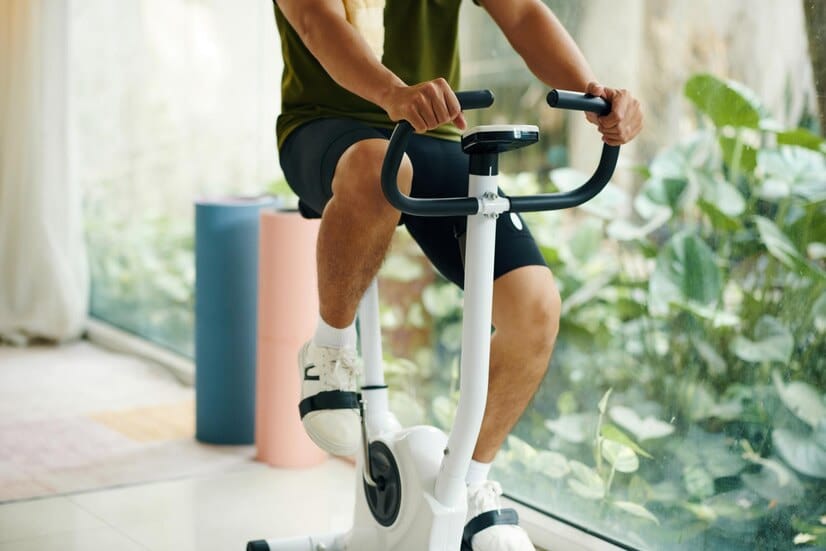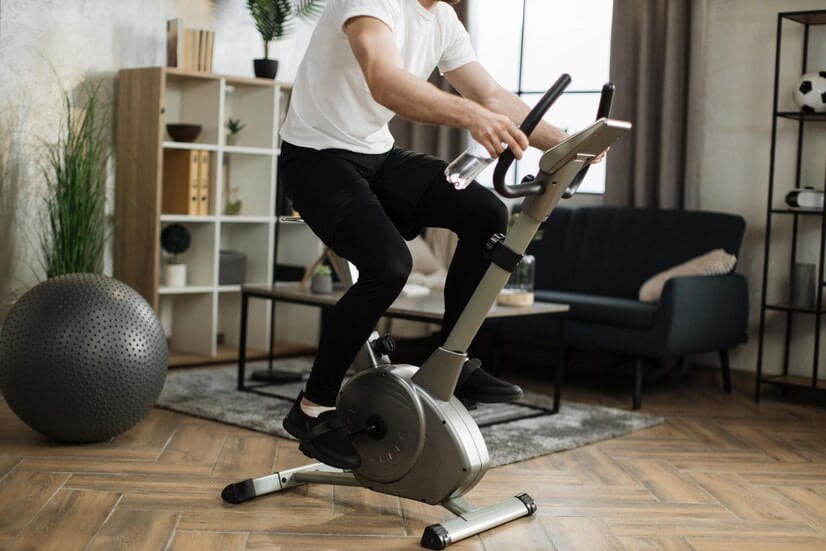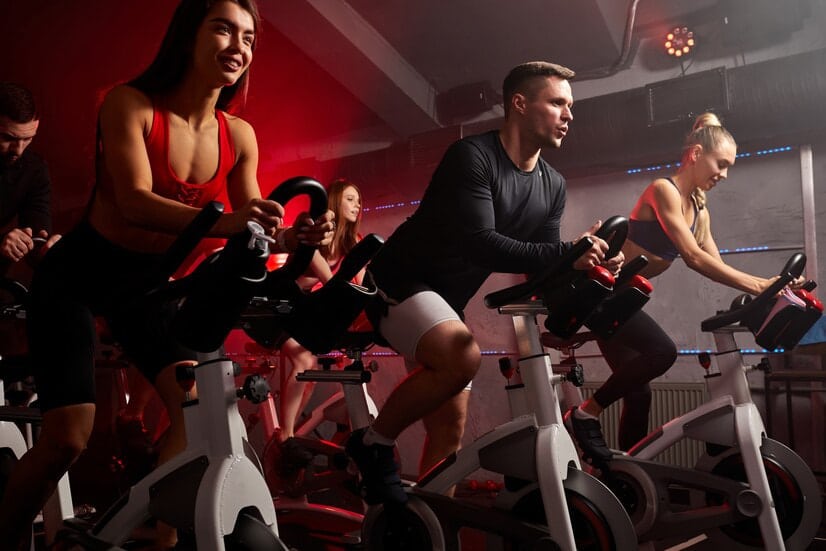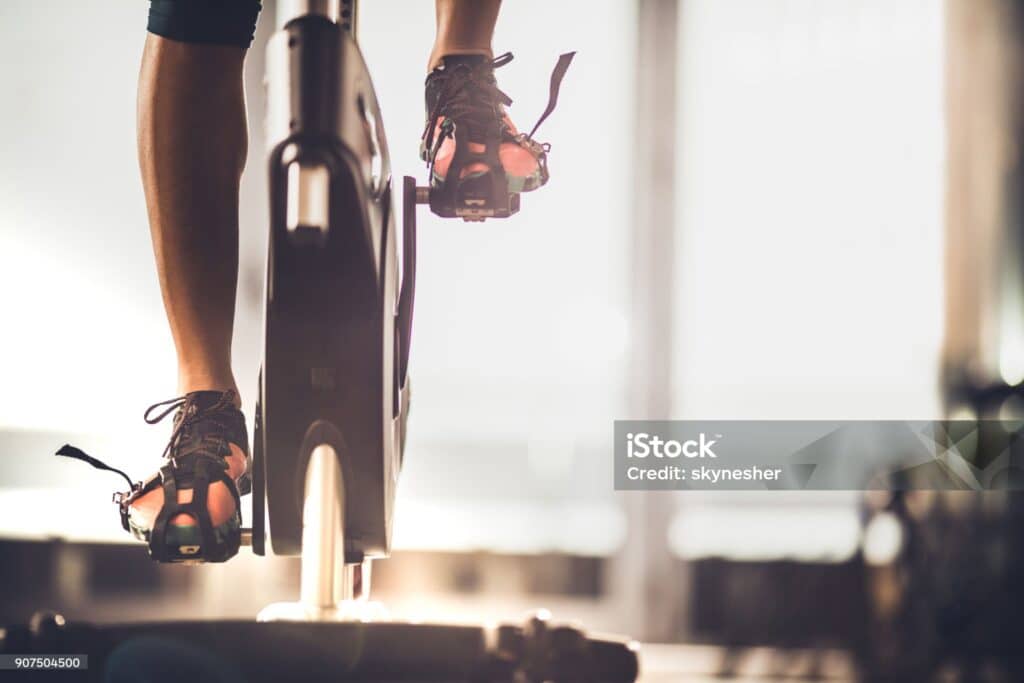
Summary
Welcome » Welcome » Tips for improving » Cycling heart rate zone: The secret to pedaling hard and for a long time
Cycling heart rate zone: The secret to pedaling hard and for a long time
Looking to improve your cycling performance? Know your heart rate zones is essential to structure your sessions and maximize your results. Each zone plays a key role in your progress, whether it's to boost your endurance or increase your speed.
Summary
Introduction to Heart Rate Zones
In this article, you'll learn how to determine your maximum heart rate and how to use each zone to achieve your goals. We'll guide you step by step to optimize your efforts.
When it comes to cycling, one of the key factors to progress is knowing your skills well. heart rate zones. But what exactly is it? These zones are levels defined according to your maximum heart rate (FCMax). They allow you to calibrate the intensity of your efforts according to your objectives, whether it is to improve your endurance, work on your explosiveness or simply recover after an intense session.
By mastering these zones, you not only optimize your performance, but you also avoid falling into the trap of overtraining. Each zone has a specific role in your program, whether it is for refine your physical condition, maximize your aerobic capacity, or even increase your lactic threshold. So, following these indicators helps you to be more efficient during your training and to progress more quickly. You will know exactly when to slow down, when to speed up, and above all, how stay in tune with your sporting goals.
Ultimately, whether you're a novice or a cycling enthusiast, understanding these zones gives you the keys to transforming your outings into real, targeted workouts. The advantage? Less wasted effort, more concrete results!
How to Determine Your Maximum Heart Rate (HRMax)
There maximum heart rate (HRMax) is a key indicator for calibrating your workouts. It is the maximum number of beats per minute that your heart can reach during intense effort. Knowing this data is essential for defining your heart rate zones and structuring your cycling sessions.
Methods of Calculating FCMax
There are two main methods to determine your FCMax: the theoretical method and the practical test.
- The theoretical formula : This is the simplest method. For men, simply subtract your age from 220, and for women, subtract 226. For example, if you are 30 years old, your HRmax would be 190 for a man (220 – 30) and 196 for a woman (226 – 30). This method is quick, but it is still approximate, as it does not take into account individual specificities, such as your fitness level or genetics.
- The practical test : If you want more precision, it is recommended to perform a field or laboratory test. This test involves pushing your body to its maximum, often under supervision, to obtain a more reliable measurement. You can do a test uphill or on an indoor bike, gradually increasing the intensity until you reach total exhaustion. This method is more demanding, but it offers much more accurate results than the theoretical formula.
Whichever method you choose, knowing your HRMax allows you to adjust your training zones to optimize each session and achieve your goals more effectively.

The Different Heart Rate Zones
Heart rate zones are essential benchmarks for adjusting the intensity of your cycling sessions. Each corresponds to a specific percentage of your maximum heart rate (HRmax) and serves a specific purpose in training. Understanding these zones helps you structure your efforts, whether it's to improve your endurance, speed or recovery.
Zone 1 – Active Recovery
Light intensity, less than 75 % of FCMax
Zone 1 is synonymous with relaxation. Here, the goal is recovery. Whether at the end of a session or on calmer days, this zone allows your body to gently recover from more intense efforts. You will be able to talk easily while pedaling and the feeling of fatigue is very low. Use this zone to warm-up or the return to calm, in order to maintain a low heart rate without overloading your cardiovascular system.
Zone 2 – Endurance
Moderate intensity, up to 85 % of FCMax
This zone is often described as the backbone of long-duration training. By cycling at this intensity, you develop your aerobic endurance, your body's ability to use oxygen efficiently over extended periods of time. This is where you'll work on the foundation of your fitness. You're able to hold a conversation, but still feel a constant effort. This zone is ideal for long rides or regular endurance sessions.
Zone 3 – Tempo
Sustained intensity, up to 92 % of FCMax
You start to get into the thick of things with Zone 3. The intensity is noticeably higher, and although you can still talk, it becomes more difficult. This effort helps improve your aerobic capacity and your basic endurance. This is an area to focus on for workouts that aim to push your limits and prepare your muscles for prolonged efforts. You will gradually feel more comfortable in longer efforts.
Zone 4 – Threshold
High intensity, up to 96 % of FCMax
Zone 4 is often described as the “threshold,” because this is where your body begins to build up lactic acid. The goal? To increase your lactic threshold, that is, pushing back the point where you start to feel significant fatigue. This zone is crucial for those looking to maximize their performance in shorter but intense races or outings. Talking about it becomes complicated, the effort is significant, but it remains sustainable for relatively short periods.
Zone 5 – Maximum Effort
More than 96 % of FCMax
Welcome to the explosiveness zone. Here, you reach your limit, with very short and intense efforts, such as sprints. This zone is reserved for athletes who seek to improve their speed and power by soliciting the anaerobic system. You will only last a few seconds at this level, and any conversation is impossible. These very intense efforts are ideal for improving your maximum speed and your resistance to extreme efforts.
Incorporating Heart Rate Zones into Your Training
Understanding heart rate zones is good. But knowing how to use them effectively in your training, it's even better! These zones allow you to structure your sessions intelligently and optimize your efforts to achieve your goals, whether it's improving your endurance or boosting your explosiveness. Here's how to integrate them strategically into your workouts.
Planning Training Sessions
The key to a good program is a good distribution of intensities. By varying your heart rate zones throughout the week, you stimulate different aspects of your fitness without falling into the trap of overtraining.
- Active recovery days (Zone 1) : They allow your body to regenerate while staying active. Ideal for light outings or cross training sessions.
- Long endurance rides (Zone 2) : This type of session represents the basis of your training. Devote several hours to it to develop your ability to maintain prolonged effort.
- Tempo or threshold sessions (Zones 3 and 4) : These more intense, but relatively short, sessions improve your ability to sustain higher efforts over a longer period of time. They are perfect for intervals or climbs.
- Maximum efforts (Zone 5) : Used for interval training or sprints, these short, intense efforts help you improve your power and speed.
Adaptation of Zones According to the Evolution of Physical Condition
Your fitness level changes over the weeks. This means that your maximum heart rate (HRMax) can change, and with it, your heart rate zones. It is therefore essential to recalculate your zones regularly, especially after periods of intensive training or at the start of a new season. This will allow you to adjust your sessions according to your progress and ensure that you are always working in the right effort zones.
Don't rest on your laurels. If you neglect this aspect, you risk training at inappropriate intensities, which could limit your progress or even increase the risk of injury.

Conclusion
Knowing and using your heart rate zones is essential to optimizing your cycling training. By adapting your efforts to each zone, you improve your endurance, your power and avoid overtraining. This is the key to progressing effectively.
To determine your zones, calculate your FCMax and adjust it regularly. Each zone has a specific objective: recovery, endurance or explosive efforts. This allows you to adapt your sessions to your needs and your progress.
Go indoor cycling with Space
Want to mix cycling and weight training? At SPACE CYCLE, our session POWER RIDE combines cardio and strength training for a complete workout, with an emphasis on core.
Dive into an immersive experience with SPACE CYCLE, where lighting effects and an electrifying atmosphere, hosted by our coaches and their unique playlists, await you.
Find us in our studios BONNE NOUVELLE Or Bastille for extraordinary indoor cycling sessions!
Read also
RPM combien de fois par semaine : Guide pour optimiser vos séances
Vélo d’appartement bienfaits : pourquoi l’adopter dès maintenant ?
Follow us
on instagram
To follow all our news,
take advantage of our tutorials and participate
in our many contests.
Breaking news!
Receive our newsletter.





